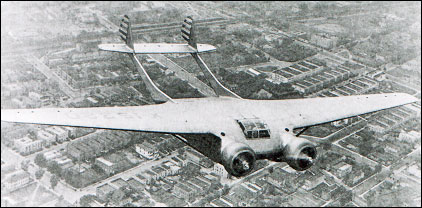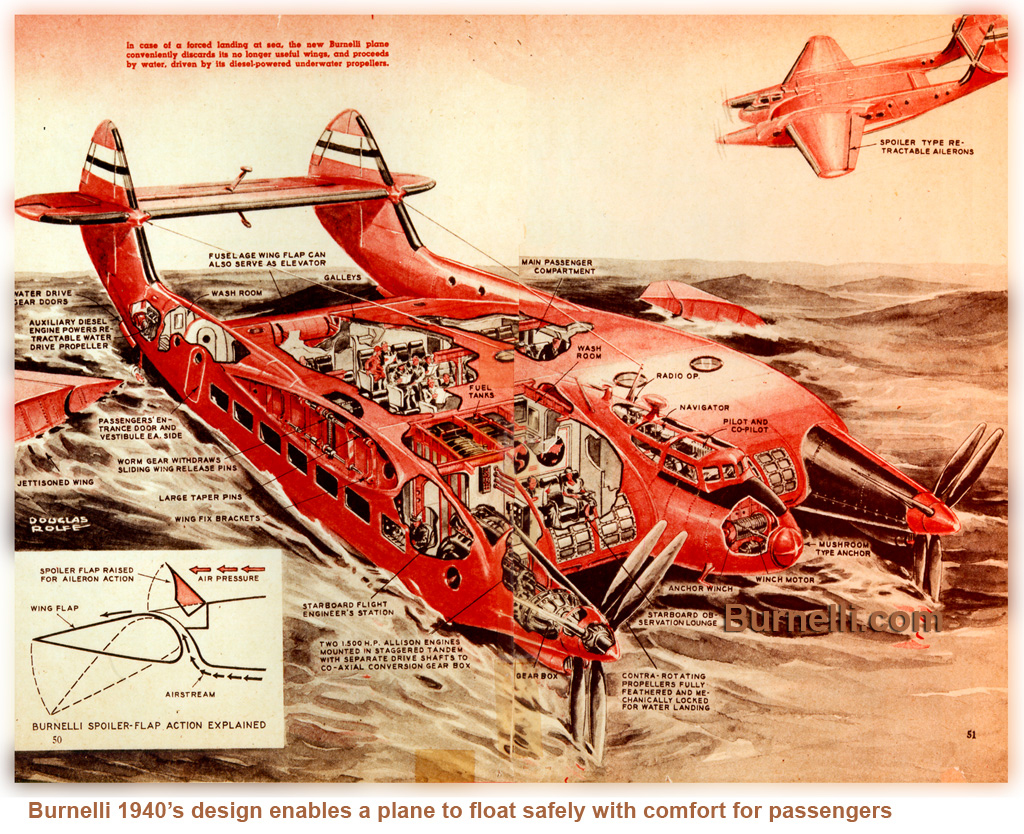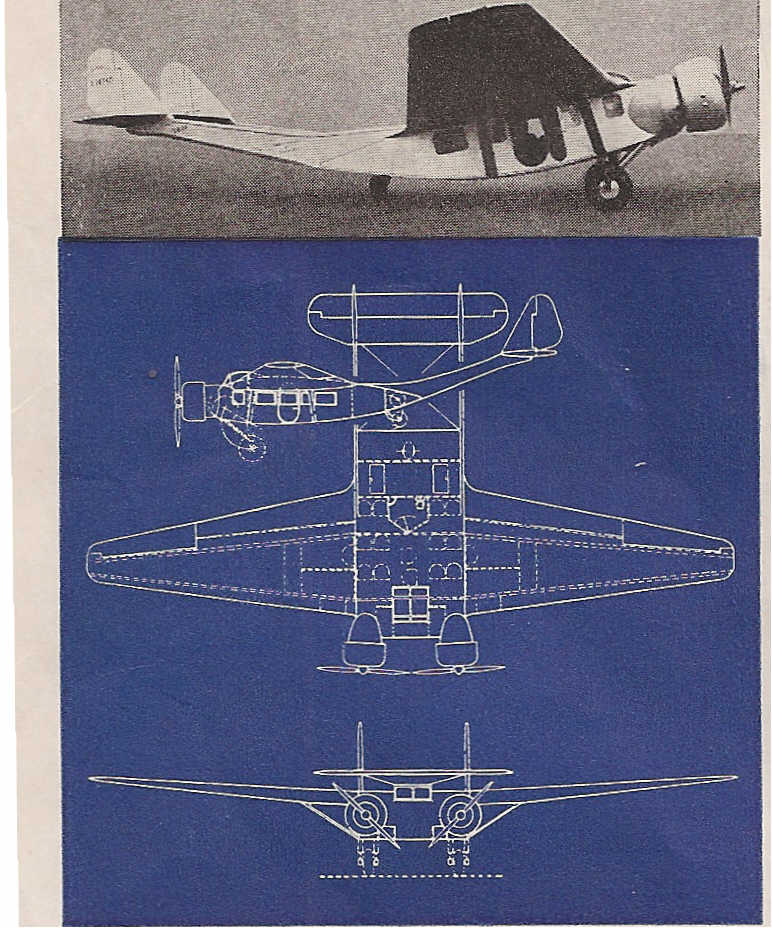Burnelli UB-14
The Uppercu - Burnelli UB -14 was a passenger and experimental aircraft of the U.S. American manufacturer Uppercu - Burnelli. Development began in 1933 in Uppercu - Burnelli work Keyport (New Jersey). The design of the machine followed the preceding designed by Burnelli aircraft, where all the concept of the buoyant hull ( lifting fuselage ) was based. This Burnelli designated a broad, profile -shaped in longitudinal section fuselage, which allowed a very generously sized cabin. In addition, the hull contributed significantly to the total lift of the aircraft. Even the engines and landing gear were housed in the fuselage.
History
UB -14A
The prototype with the registration X14740 had its first flight in late 1934. Already on January 13, 1935 overthrew the machine in a spectacular way on the Newark Airport from. Of this there is a film document. The test pilot Louis T. Reichers led his survival back to the special design of the Burnelli planes that compared with conventional constructions showed a much higher stability of the passenger cabin. The reason of the crash failure of control as a result of maintenance shortcomings have been identified.
UB -14B
After losing the first machine a second labeled UB -14B was built. Compared to the prototype they received some improvements in detail. In contrast, the engine remained unchanged at first; later, however, two uprated Hornets were each with 550 kW ( 750 hp ) installed because the permissible weight of 6450 kg ( 14,200 lb) to 7950 kg ( 17,500 lb) increase. The first flights were carried out by Clyde Pangborn.
The good performance results shown meant that in July 1936 negotiations with Scottish & Aircraft Engineering Company were made to build a version of the UB -14. The Dutch company Aviolanda in Papendrecht showed interest in a licensed construction. Among these positive signs Burnelli organized a demonstration tour of Europe. Originally, the aviation pioneer Amy Johnson as part of an air race in August 1937 by New York to France was to convert the machine to Europe.
When smashed this plan, only one ship transport out of the question, but she did several months of delay. Only in December 1937, the engine was rebuilt and registered as NR15320. In their demonstrations in Hatfield (Great Britain), the UB -14 enthusiastic by their short, steep take-offs and their short landing distances at low speed.
After returning to the United States, preparations were made for a so-called world flight with Clyde Pangborn. In its last stage of construction with rounded tail surfaces and modified engine covers the UB -14B was bright red painted and newly registered with the registration R15320 for the record flight. However, due to the beginning of the war, the project had to be abandoned and the machine resulted in the next three years for the TACA cargo transportation between Miami and Honduras. One year after the end of the war, the aircraft was taken out of service.
OA -1
The efforts of Burnelli to achieve a series production of the UB -14 in Europe, led only to the fact that at the Scottish Aircraft & Engineering Co. in their Wembley Scotia plant vollmaßstäbliches a mock-up could be made of wood. In early 1937, this was almost completed when the company went bankrupt and the work was stopped very quickly.
Then was the B.A.O. On August 9, 1937 Ltd.. with the corporate goal of production and trade established with aircraft. Chief was Sir Hugh Cunliffe -Owen, chairman of the British American Tobacco Co.. , The company changed its name in May 1938 in Cunliffe -Owen Aircraft Ltd.. and now planned to build a highly modified version of the UB -14 with the designation OA -1. Externally very similar to the UB -14, they differed in the internal structure but strong and was powered by two Bristol Perseus engines with 710 hp.
Construction
The UB -14 was an all-metal construction with a load-bearing Duralumin outer skin. Similar to the UB- 20, the smooth metal paneling was applied to a sub- frame of the same material.
The connected in the upper cabin area were each wing braced to the lower fuselage back twice. Unlike conventional two-engined airplanes, the wings no forces had to motor weight, commence their torque and vibration, as well as the burden of suspension shocks. Only the buoyancy forces had to be picked up by the zweiholmigen wings. The two charged, each 500 kW ( 680 hp ) payable Hornet engines from Pratt & Whitney were arranged side by side on the fuselage leading edge. Fuel and oil tank lying in the wings.
The luxuriously appointed cabin had the generous for that time dimensions of 3.33 m (11 ft) in length, a width of 3.64 m ( 12 ft ) and a height of 1.62 m ( 5ft 4 in). So there was an electric lighting and a thermostatically controlled heater with an aerator. At the end of the cabin there was a toilet and the cargo or baggage compartment. The latter was supplemented by other facilities in the wings.
The two pilots sat side by side in an enclosed cockpit, which was located between the engines in the wing leading edge. The pilots could even looking through is arranged in the lower part of the sash window according to the rear. Housed in the hull retractable spur wheel undercarriage was inspected from the pilots as well and accessible in flight. The time for drawing was 45 s, 12 s, it could be extended. The tail wheel was rotated by 360 °.








